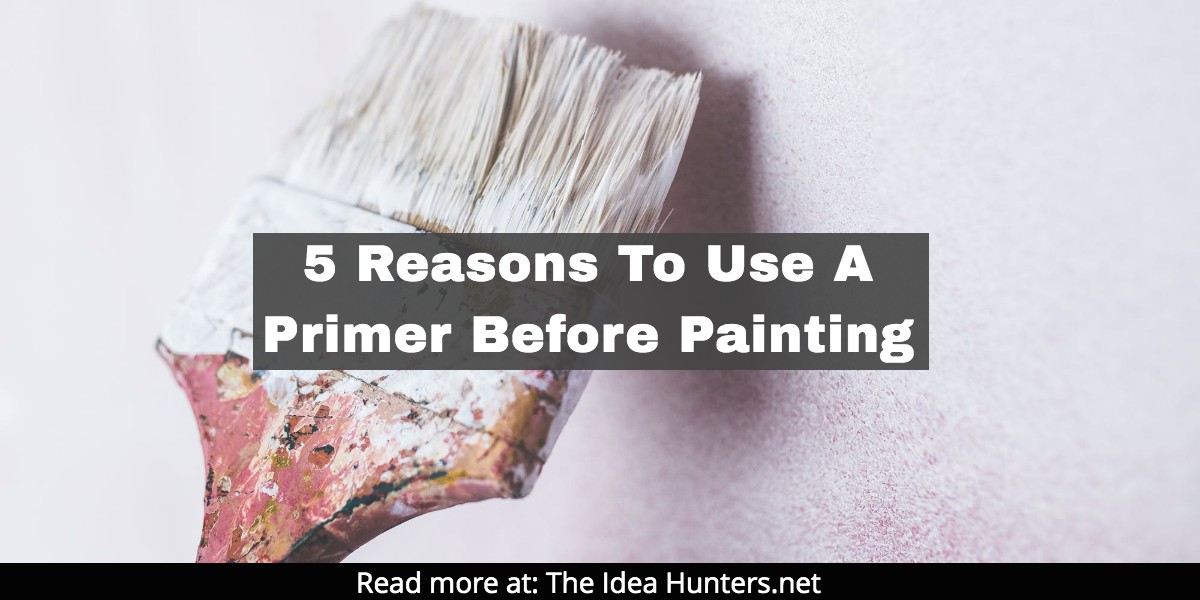
If you are undertaking a DIY painting project for your home or workplace, then the question on whether to use a primer before painting will inevitably come up.
These days, many top paint manufacturers are putting out paint and primer in one, eliminating the need to first do an initial primer coat.
This is a tremendous time saver when painting clean walls that are in good condition.
However, there are still instances where using a primer coat first is an important step, especially since primer is typically less expensive than paint. A base coat or two of primer before painting can make good financial sense for a DIY painting project.
Here are five instances where using a primer before painting is a good idea.
Reason to Use a Primer Before Painting #1:
Cover dark colors

If you are changing the color of a room from a dark color to a lighter one, then using a primer for a first coat is a wise choice. The white primer will provide a better palette for your new paint’s true color to shine through without interference from the original darker color.
Another good instance for using primer is changing sheens of paint. For example if you are switching from a semi-gloss sheen to a less reflective satin finish, priming first will improve the end result.
Reason to Use a Primer Before Painting #2:
Block stains and marks

If you are painting a surface with water or smoke stains or markings, you’ll want to first cover these with a primer layer so they don’t bleed through the new paint color.
Reason to Use a Primer Before Painting #3:
Reduce odors or mold

Areas that get a lot of moisture, such as bathrooms and kitchens may get mold or odor buildup on the walls and ceiling.
Also, tobacco smoke odors can linger in rooms as well. If this is the case, then first priming before painting will ensure any previous odors and mold are greatly reduced or eliminated before the new paint is applied.
Reason to Use a Primer Before Painting #4:
Seal porous surfaces

Certain surfaces are more porous than others, and using a primer before painting can help make for a better finished product as well as less frustration and work.
Porous surfaces can act like a sponge and suck in paint, resulting in the need for numerous coats and potentially getting an uneven finish with poor results (and higher expense).
Newly installed drywall is very porous, as well as bare wood. Masonry such as retaining walls and brickwork are also extremely porous and require a primer coat before painting.
Reason to Use a Primer Before Painting #5:
Improve paint adhesion

Primer acts like a stable surface for your paint to lock onto. If a paint cannot lock onto a surface, the result will be a drippy, runny, uneven mess.
Conclusion
Before your next DIY home improvement paint project, it might make a lot of sense to prime first before painting.
While priming is an additional step, the end result will save time and energy and reduce the headache of needing to re-apply multiple paint layers.
About James K. Kim
I am a former archery technician turned freelance digital marketer. I help people build profitable businesses online.
You can learn more about how to build a profitable online business at JamesKKimMarketing.com.
In my free time I enjoy the ancient sport of archery, sport crossbow target shooting, deep sea fishing, day hiking, recreational kayaking, high intensity weight training, ice hockey, and outdoor cooking.
Let's connect on social media:
Facebook • Twitter • Linkedin • Youtube • Pinterest • Instagram •








